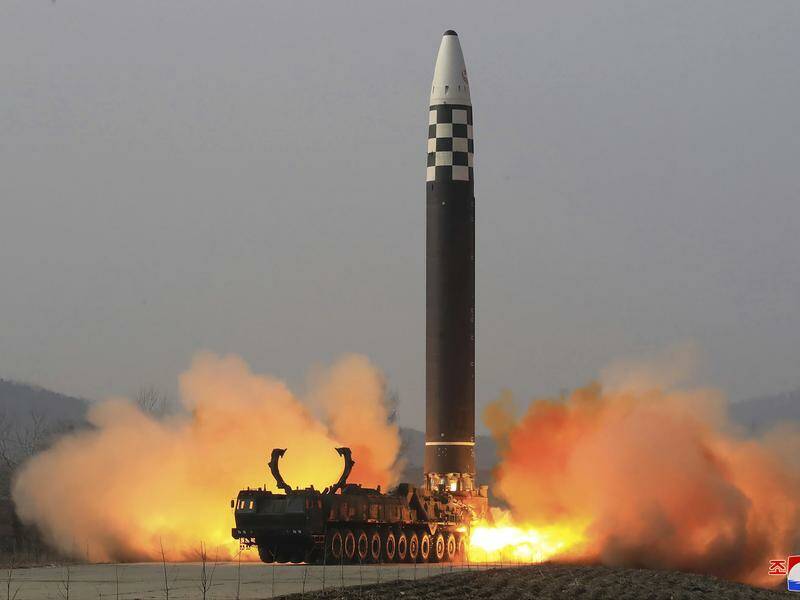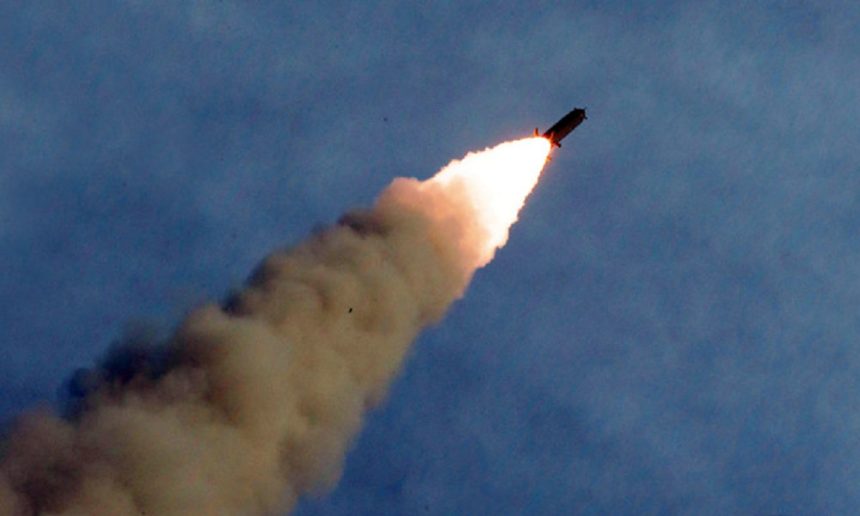On Thursday morning, North Korea launched a “long-range ballistic missile,” marking Pyongyang’s first weapons test following recent allegations from South Korea that North Korea has deployed tens of thousands of soldiers to Russia.
This missile launch, observed by South Korea’s Joint Chiefs of Staff (JCS), adds to an escalating security standoff in the region, exacerbated by mounting diplomatic tensions involving Russia, Ukraine, and NATO-aligned countries.
According to the JCS, the missile was fired from the Pyongyang area around 7:10 AM local time, toward the East Sea, also known as the Sea of Japan. Preliminary assessments suggest the projectile was launched on a lofted trajectory—fired upward rather than outward—an approach North Korea has often used to avoid overflying neighboring countries.
Such high-angle launches are typically reserved for North Korea’s longest-range intercontinental ballistic missiles (ICBMs), capable of reaching considerable distances, possibly even the continental United States.
As the missile soared, South Korea heightened its alert level, swiftly sharing intelligence with allies in the U.S. and Japan. Japan’s coast guard also confirmed a likely launch, cautioning vessels in the area to exercise caution due to potential debris.

The missile launch occurred just hours after senior defense officials from South Korea and the United States publicly condemned North Korea for allegedly sending military personnel to Russia.
These claims, reiterated during the allies’ annual defense discussions in Washington, D.C., allege that North Korea has stationed around 10,000 troops in Russia, purportedly to support Moscow in its ongoing conflict with Ukraine.
Both Seoul and Washington issued stern warnings to Pyongyang, demanding a retraction of any such deployments and decrying North Korea’s reported alignment with Russia as a “significant security threat” to the region and beyond.
READ ALSO: Trump Warns: Europe Will Face ‘Significant Consequences’ Over Tariffs
In a recent statement to South Korean lawmakers, military officials emphasized that the transfer of North Korean troops to western Russia likely went beyond mere observation, indicating potential involvement in combat or support roles. The timing aligns with recent agreements between North Korean leader Kim Jong Un and Russian President Vladimir Putin, following a mutual defense pact inked between the two leaders in June.
Despite North Korea’s consistent denials of troop deployments to Russia, Pyongyang’s vice foreign minister recently stated in state media that any such military cooperation would align with international law. This comment comes amid rising concerns that Kim Jong Un’s regime could further escalate its involvement by supplying weaponry to Russian forces—a move that would potentially intensify both UN sanctions and international condemnation.
In response to this escalating crisis, South Korean officials have intensified diplomatic consultations with their American counterparts, while also considering whether to provide direct military support to Ukraine.
Although Seoul has been a significant arms supplier globally, longstanding policies have barred South Korea from sending weaponry to active conflict zones. Yet, this policy is under review as Pyongyang’s alleged arms transfers to Russia continue to strain Seoul’s stance on foreign military engagements.
This potential policy shift underscores the gravity of the situation. South Korean officials have described North Korea’s actions as an “accelerating deployment” that not only poses a severe threat to regional stability but also signals an increasing willingness by North Korea to partner with other nuclear-armed nations.

Pyongyang’s intensifying missile tests and increased military posturing are part of a broader strategy to develop and demonstrate its long-range missile capabilities. Over the past year, Kim Jong Un’s regime has launched a record number of missiles, and experts warn that Pyongyang may be honing its technology before potentially supplying it to Moscow.
Under multiple rounds of United Nations sanctions, North Korea is banned from using ballistic missile technology. However, these sanctions have done little to deter Kim’s government from continually advancing its missile and nuclear programs.
Analysts suggest that North Korea’s aggressive weapons testing and alleged troop deployments to Russia signal a deepening military partnership with Moscow. This evolving dynamic poses significant challenges not only to South Korea and Japan but also to the United States, as they seek to counterbalance a possible North Korean-Russian alliance.
As Seoul and Washington strengthen defense coordination, Japan’s participation in trilateral military readiness further exemplifies the shifting security landscape in Northeast Asia.
As tensions mount, both the South Korean and U.S. militaries maintain a high state of readiness. With the possibility of further provocations from Pyongyang—including additional missile launches or even a nuclear test in the coming weeks—Northeast Asia’s security outlook remains precarious.
This latest missile test may also be an attempt by Kim Jong Un to project strength ahead of the upcoming U.S. elections, underscoring the regime’s intent to remain at the center of international attention while defying UN sanctions.
In this evolving scenario, the international community continues to monitor North Korea’s actions closely, as Seoul, Tokyo, and Washington strategize on ways to counteract Pyongyang’s provocative moves. The missile launch, troop deployment allegations, and potential arms trade with Russia represent not only a critical juncture in Northeast Asian security but also a broader challenge to global peace and stability.

